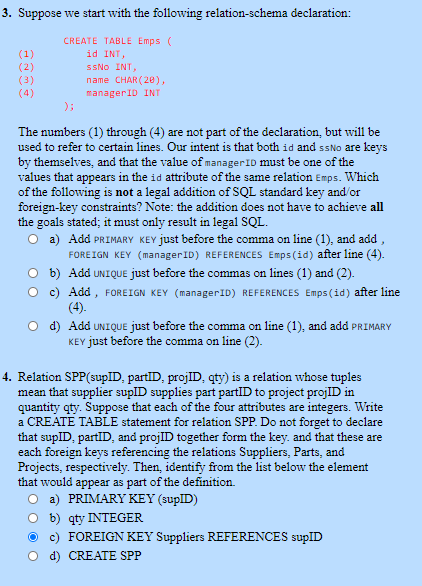Answered step by step
Verified Expert Solution
Question
1 Approved Answer
Please answer the above two questions. Thanks 3. Suppose we start with the following relation-schema declaration: (1) (2) (3) (4) CREATE TABLE Emps ( id
 Please answer the above two questions. Thanks
Please answer the above two questions. Thanks
Step by Step Solution
There are 3 Steps involved in it
Step: 1

Get Instant Access to Expert-Tailored Solutions
See step-by-step solutions with expert insights and AI powered tools for academic success
Step: 2

Step: 3

Ace Your Homework with AI
Get the answers you need in no time with our AI-driven, step-by-step assistance
Get Started


